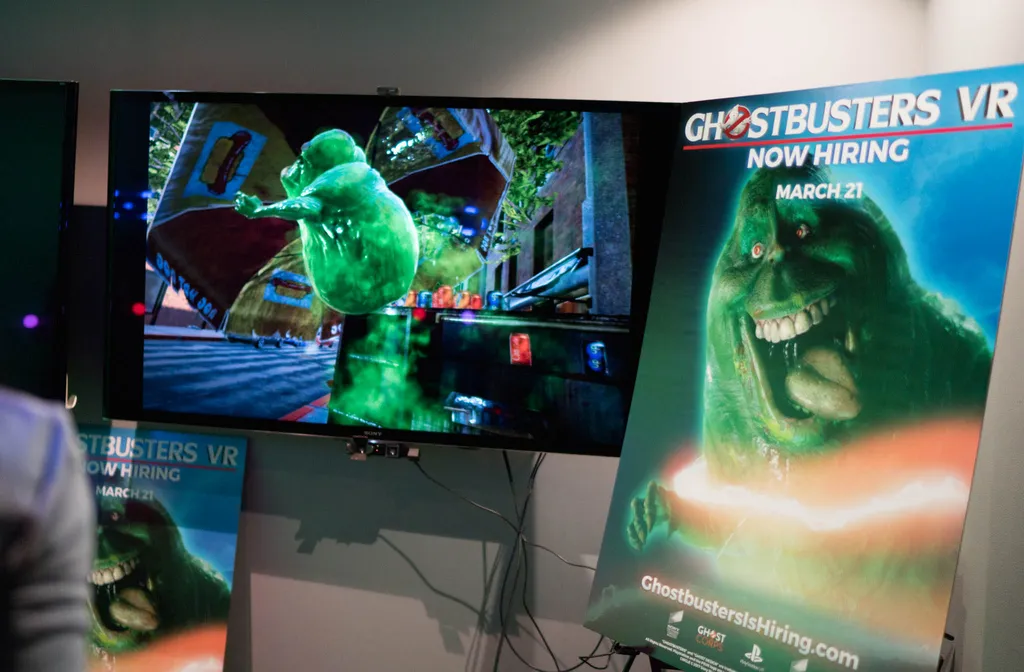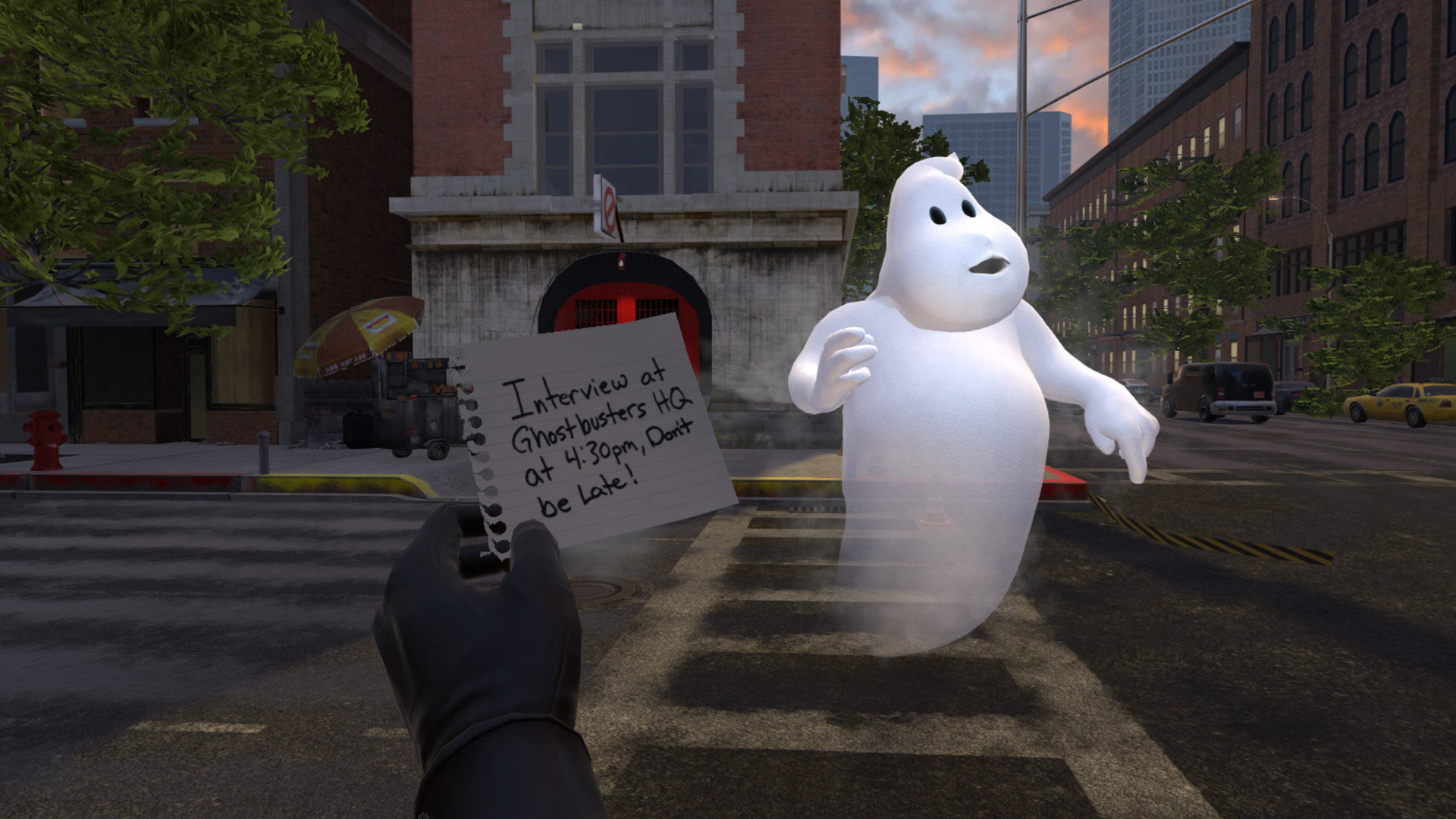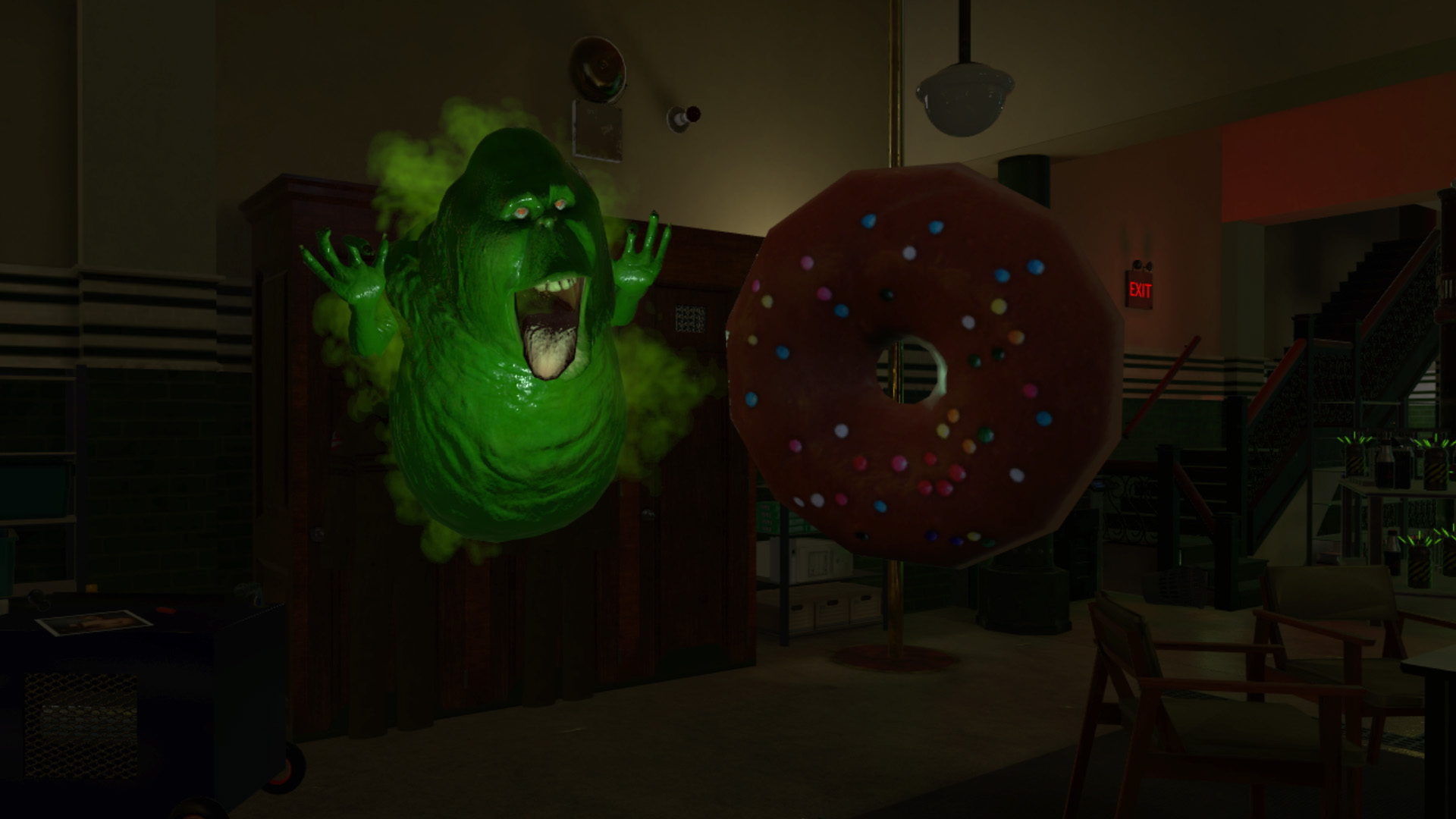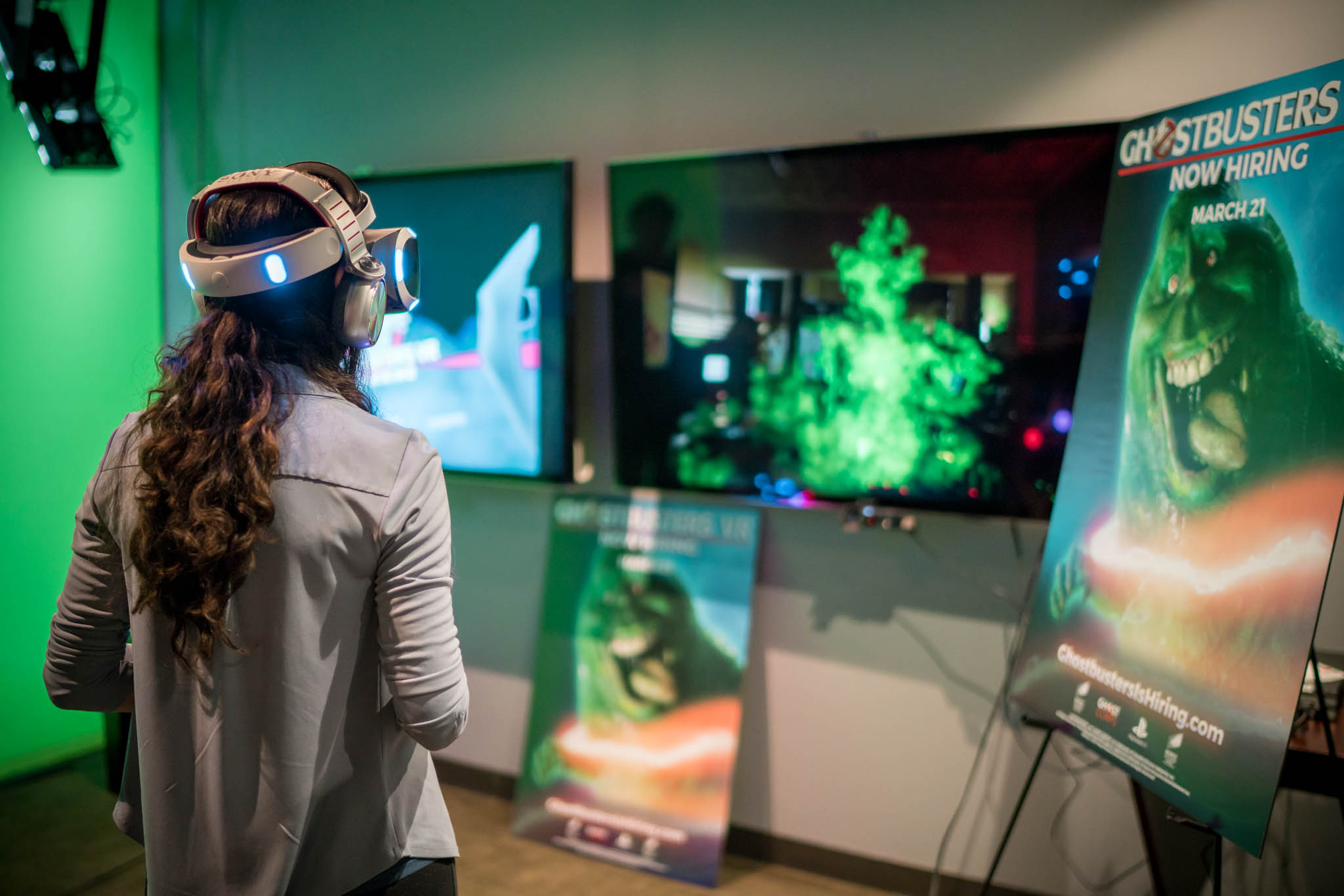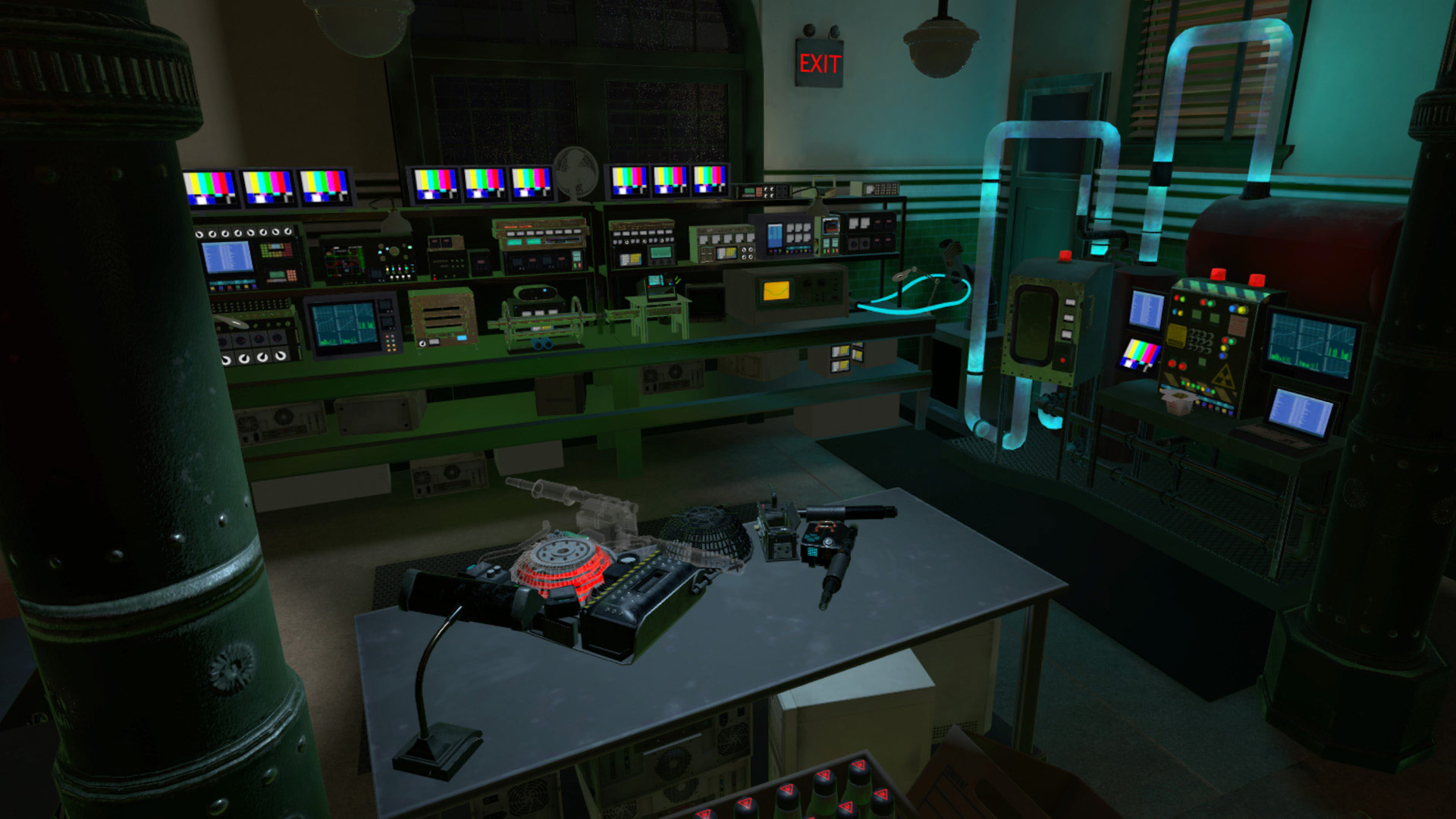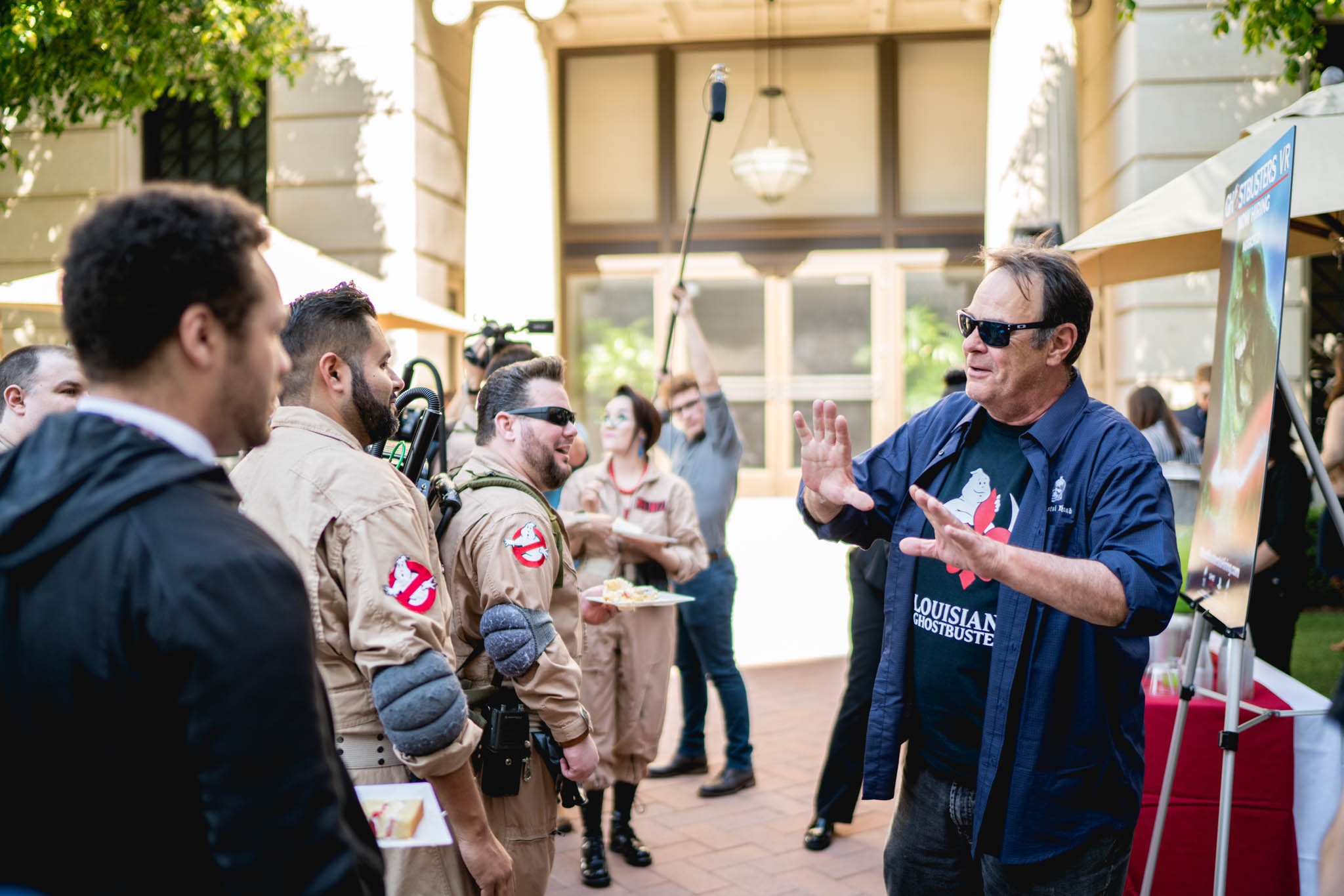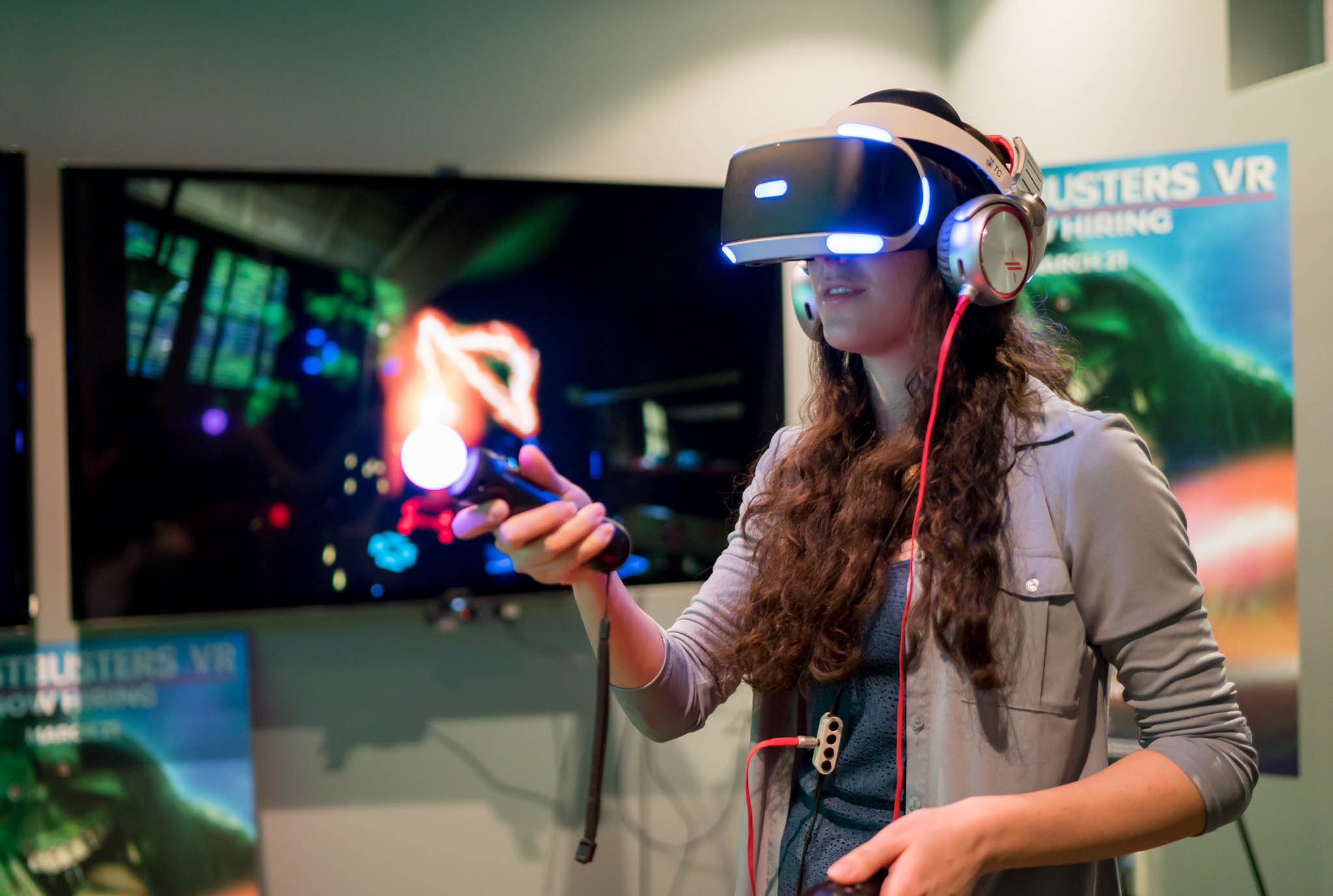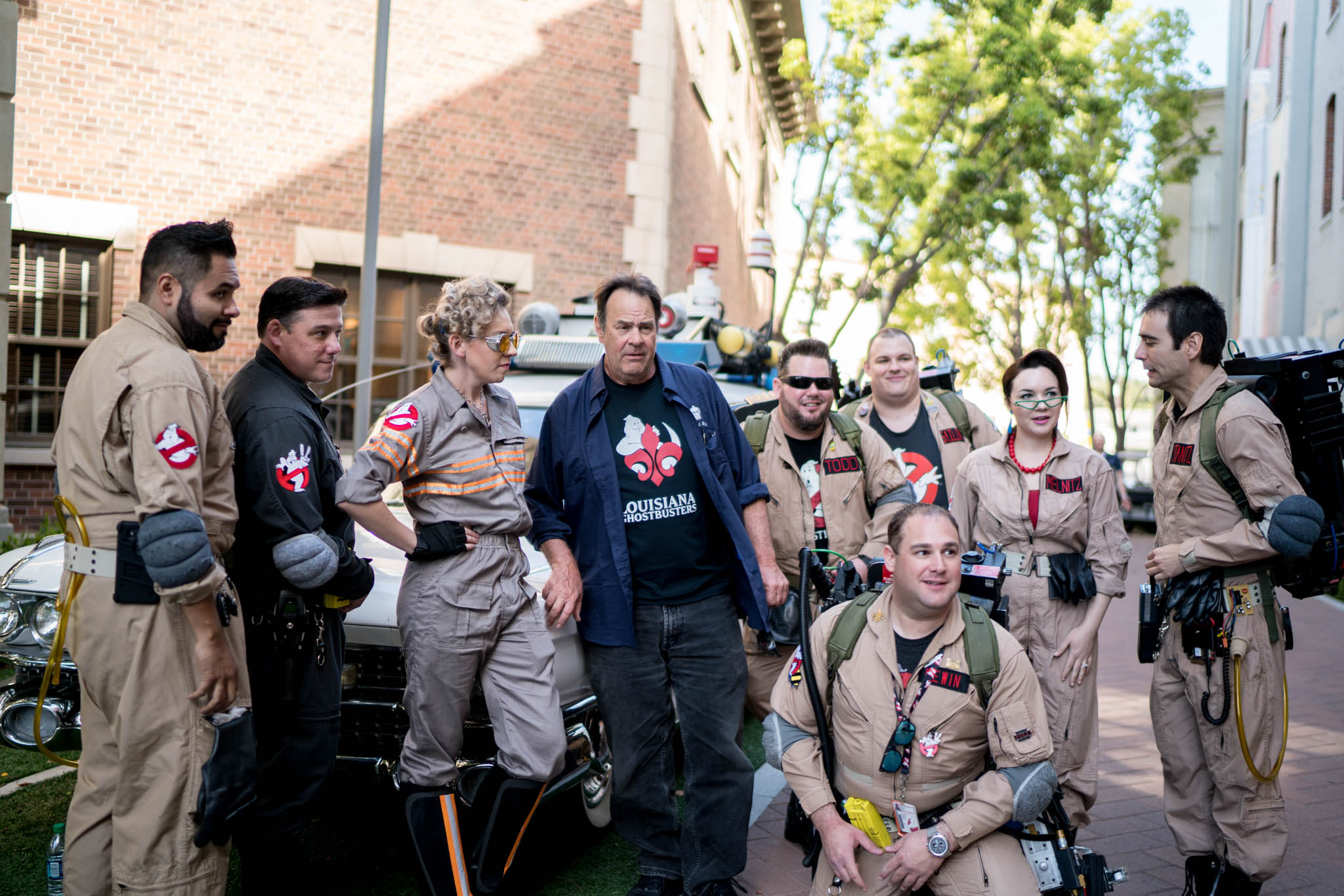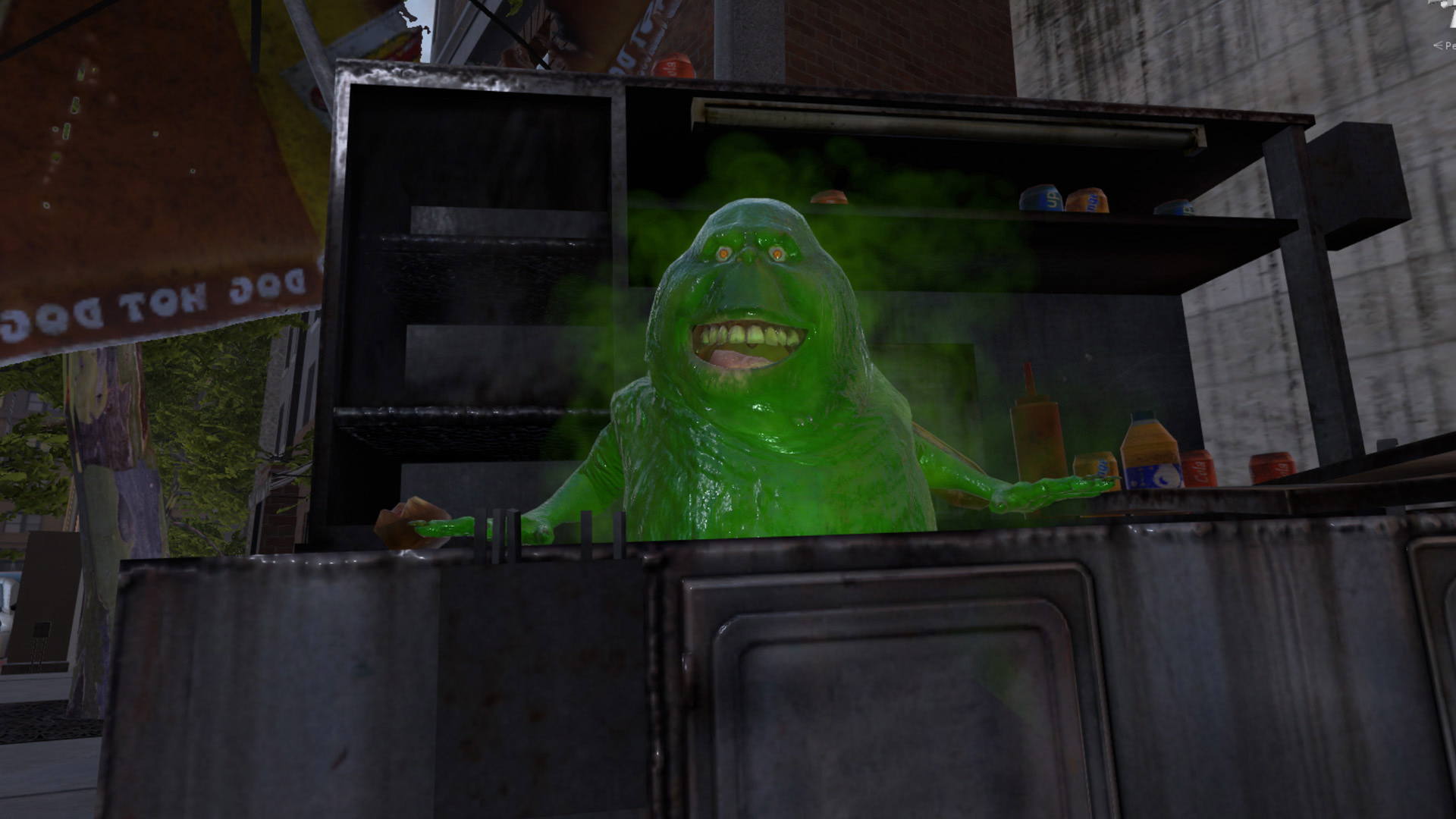Ghostbusters VR – Now Hiring is a good argument for the death of large, licensed video games. This short-form PlayStation VR (PSVR) experience from Sony Pictures Virtual Reality avoids some of the largest pitfalls of film-based video games. It’s relentlessly lively, respectfully accurate, and most importantly, it’s dense in the most distracting way.
It’s not two minutes into my time with Now Hiring’s first chapter, Act 1: Firehouse, that I’m greeted by my first ghost. Moogly, voiced by Patton Oswalt, pops out of the bricks of Ghostbusters HQ with a few tips for an aspiring buster like myself.
Who You Gonna Call?
But instead of heading into the building for my interview, I point my PSVR move controller at a nearby hotdog stand, teleport to its side, and start tossing ketchup bottles into the street.
It’s only a couple more minutes before I’m assaulted by another spectral face. Slimer is on the loose, and I’m the one meant to catch him. I step inside the firehouse and spot the green blob causing a ruckus. Moogly urges me to grab my ghost-hunting equipment. “Good idea,” I think, as I start ring-tossing donuts into Slimer’s mouth.
I hear my mentor’s sarcastic voice ring out more than a few times over my journey of infinite sidetracks. I spot the objective he’s ranting about on one end of the room, so I teleport in the opposite direction and admire notes on a whiteboard–because I’ve got a ghost to hunt, right after I listen to all these voicemails on this phone. And right after I check out this recreation of the Ecto-1 car. And right after I carefully examine and prod this random wall, the least objective-oriented spot I could possibly find in here.
Despite my ambling, Ghostbusters VR is a delightfully compact experience. Everything is propelled by this moving Slimer chase, but between close progress points are tables of mysterious canisters, throwbacks to the original Ghostbusters crew, and a few spectral surprises. I admire the frequency at which I find ghosts in my face. Not just hovering in front of me, but violently hunched in my direction, covering me in slime, and in the case of our friend Moogly, telling me to get my act together with equal parts enthusiasm and snark. Each model also manages to be surprisingly crisp and vividly animated; Slimer grotesquely wags his tongue at me, and I cringe uncontrollably.
Don’t Cross the Streams
“Part of our point of pride is to make these things look good,” says Jake Zim, VP of VR at Sony Pictures. “We get visual artistry and fidelity in that, and so if there’s anything that we can say helps differentiate us, it’s ‘let’s make these things look good.’”
Insulted by Slimer’s expertly animated mouth, I quickly assemble my proton pack, set a trap, and aim my gun. Multicolored rays of light lasso and slowly wrestle him into the trap’s radius. Before long he’s packed up tight and I’m heading to the containment unit in the basement. Moogly is proud of me, I think, for getting something done at last.
This proton gun encounter is really the quintessential Ghostbusters experience. Its rays flex with convincing tension, crackling with light each time Slimer writhes within them. The authenticity in execution is undoubtedly the result of the close involvement of Ivan Reitman, the director of the original Ghostbusters.
“There’s a whole grammar to be developed for VR, particularly when you’re speaking in terms of storytelling,” Reitman tells me, noting his near-complete lack of a gaming background. “We have 100 years of movie-going experience to explain [film] grammar.”
He’s here to build with Sony a lexicon that can bridge this new medium with classic film direction, and I am most certainly the kind of player that makes developing that language more difficult. I won’t follow my queue, my pacing is all over the place, and I require every corner of the space be meticulously designed in order to entertain my ceaseless wandering.
But there are more like me, luckily for Reitman. A small chunk of his audience stands outside our meeting room, dressed to the nines in their own film-inspired gear, and just as ill with curiosity. They excitedly share their stories of ghost wrangling and donut tossing, discovering a dangerous love for ignoring objectives.
Later in their day, original Ghostbuster Dan Aykroyd makes a surprise appearance. He gives the fans a motivational speech, he takes pictures with a 10-year old Ghostbuster-in-training, he cuts cake with Reitman. All at once, everyone is on board with Ghostbusters VR – Now Hiring.
“When we have a world like Ghostbusters, the first thing we have to do is go to the creator of that world, and the fans of that world, and the people who know that world,” Zim shares. “We say, what’s the thing that they would want to do in here, and then let’s make sure that we’re making it fun and exciting for them”
These VR projects are filled with collaboration to match its fan expectation. While the Sony development team shares with Reitman the limitations of gaming hardware, like the reluctant necessity of loading breaks, he’s been schooling them in the conciseness of film. He directs the team to remove gameplay sequences or mechanics that run too long or counter to his vision of fun. It’s a strategy Reitman attributes to his impatience.
“I’m used to making movies and comedy movies, so my level of patience is like this,” Reitman says, bringing his hands within a centimeter of each other. “So I’m always saying, this is taking too long. I’m bored already.”
Building Capable In-House VR Content
I ask him if that’s what VR’s lexicon needs, film’s impatience. “No,” he responds thoughtfully. “I think part of the beauty of the VR experiences is that it teaches you to be more patient as a storyteller.” While more action-oriented virtual reality games focus too much on goals, he says, the key to VR is telling a story through discovery.
“Up to now, all the development has been technologically driven,” Reitman tells me, “in other words, hardware guys building new hardware. There’s been very little filmmaker, storyteller, whatever you want to call the creative side of it. That’s just starting now. Sony as a whole is a technological company, and I think it depends on creative people to really make those great leaps.”
His goal is to feed the user’s patient curiosity with a space designed with the density of impatience. It’s about removing frills that obstruct in favor of frills that inspire. It’s a delicate balance between the heavy-handed direction of film and the uncontrollably open space of VR, but luckily, Sony is in the prime position to walk this line. The film and development teams work with no small amount of appreciation for each other’s specialties.
“When you work with someone like Ivan, you want to do right by him. This is a beloved franchise, this is a beloved IP,” Zim says, reflecting on the partnership. “Here’s this legend who created this amazing thing, and here he is spending time with us little VR geeks. It was a little bit like, what’s going on here? Where’s the prank camera?…For someone who has seen so much of the history of Hollywood and been a part of it, he’s someone who just jumped into this in a really, really cool way”
“He’s a great innovator,” Reitman returns a compliment to Zim in a later time and place. “Compared to many of the other major studios, I think he’s going to bring something special here. I believe in him.”
The bridge between film and video games is often filled with painful adaptations in both directions, so Zim and I talk on the future of licensing for Sony. Smaller VR experiences like these seem ideal for extending their brands, while offering players a piece of tight immersion at a lower cost.
“I think our position is that this is an extremely important place for us to be active in,” Zim says on Sony’s recent VR escapades, which include The Walk and recently released Passengers Awakening. “If we just license everything away, there’s revenue there, and there’s opportunity there, but how do we grow our own muscle on knowing how to play in the space?”
Sony will continue to license certain projects, but are at the same time committed to building expertise in virtual reality first-hand, equipped with a wealth of properties and a large distribution platform with the PlayStation 4.
Ghostbusters VR seems the intelligent property to keep at home. Sony Pictures has pinpointed the aspirational components of the franchise, and bundles them with zany characters and sufficient interactivity that can spread over anywhere from ten to thirty minutes, depending on your personal levels of lollygagging. The experience closes quickly, but on a note of ghost-hunting adventure with creative promise, if an unclear future.
Act 1 of Ghostbusters VR – Now Hiring is available starting today on PSVR for $6.99, with no set prices or release dates for the unknown number of later installments. The team has their plans for the story mapped, and they’ll draw their maps based on feedback from even more wandering fans.

